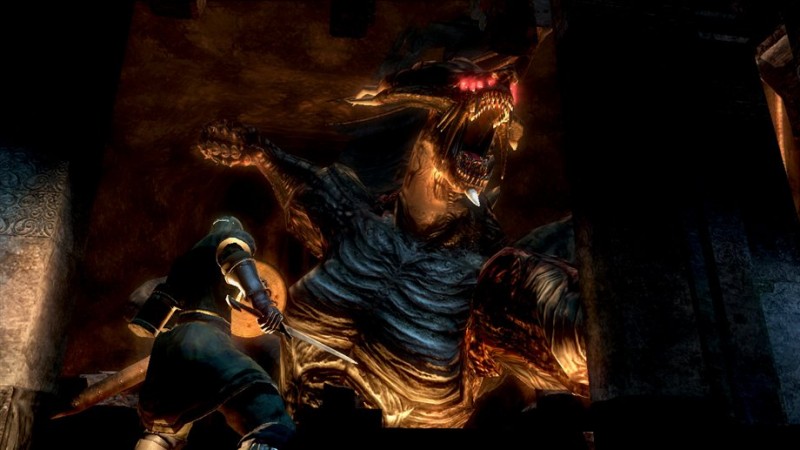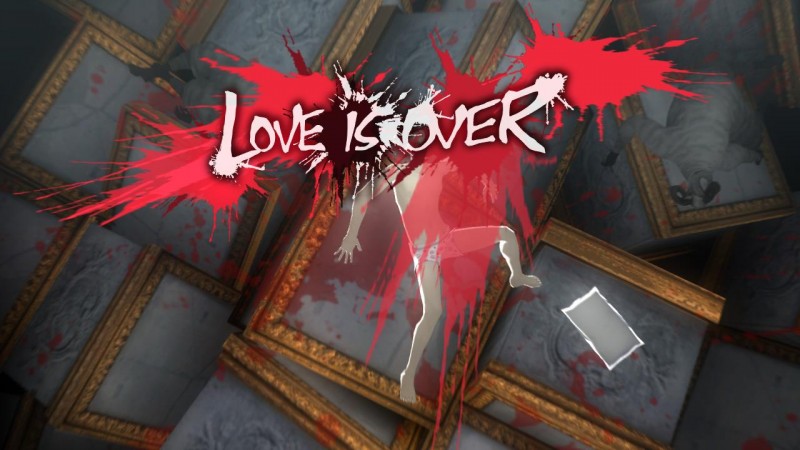Please support Game Informer. Print magazine subscriptions are less than $2 per issue
Editorial: The Ups And Downs Of Difficulty In Games

If you’ve read my review of Catherine, you know that I found the game’s nightmare sequences to be quite a frustrating experience. As I’ve heard other reactions to the game – both those similar and quite different from my own – I’ve been thinking about the function of difficulty in games. I’m not scared of tough titles; I loved Demon’s Souls (see my review here), but why is it that the hard elements of that game appealed to me while the constant deaths in Catherine were frustrating?
In his essay “Learning by Design: Good Video Games as Learning Machines,” James Paul Gee puts forth the argument that “Good learning requires that learners feel like active agents not just passive recipients.” Gee isn’t just referring to learning in the sense of going to school; he makes a strong case that video games are all about learning as well. Each time you pick up a new game, you go through the mental process of learning that game’s rules – what each button does, how you can interact, and how to accomplish goals and “win” at the game in question. A good video game, like a good teacher, makes participants feel like they’re an active part of that learning process, understanding more and getting better as they progress.
For as much reputation as it has gained for being a brutally difficult game, Demon’s Souls is really just a game that expects players to learn. Where some action titles base success on how fast you mash on buttons, how powerful your loot is, or how well you can memorize complicated button combos, From Software’s excellent action/RPG is more concerned with how much attention you pay to your surroundings and how strategically you approach battle with beasts much larger and more ferocious than you.
Take, for example, the first boss you encounter in Demon’s Souls. At the end of the tutorial, players find themselves in a small, circular arena along with a giant winged demon known as Vanguard. This sword-wielding fiend is powerful enough that he will kill players of even the hardiest classes in a single hit. Dying to this beast – as most players almost certainly will the first time – teaches a core lesson to keep in mind for the rest of Demon’s Souls: Death will come fast and often in this game. But if you pay close attention, this battle can reveal even more.
Returning to Vanguard by restarting the game (or finding him later on in a different level), some players may discover that he can be defeated…if you’re smart about it. The battle with Vanguard holds some key revelations about Demon’s Souls combat system. For one, being aggressive won’t get you anywhere. If you run at this boss hacking and slashing, he’ll strike you down. As another note, shields don’t help much either. With lesser enemies, blocking can be important, but with boss characters you’re generally better off learning how to dodge. And there’s the biggest lesson of all for Vanguard: If you want to succeed at combat in Demon’s Souls, watch your environment and the way your opponent moves and dodge-roll diligently. I picked up on these lessons quickly because I was stubborn about starting the game over and attempting to defeat Vanguard several times.
NEXT: How does Catherine handle difficulty and learning differently than Demon's Souls?

Virtually every death of the hundreds I experienced in Demon’s Souls operated in the same way. Even if I died more than 10 times in a single level, I rarely felt like the game was being unfair or cruel. In the end, those deaths were always my fault and always taught me something new about the area I was in or the enemies I was facing.
Though I died similarly frequently in Catherine, I didn’t feel like I was learning in the same way. Part of this is due to one simple element that I find frustrating in almost any game that has it: a timer. There’s not a literal clock counting down as you climb through the nightmare levels in Catherine, but either the blocks below you are slowly slipping away or a horrifying boss creature is climbing up alongside you. When you die due to time running out, the only lesson to be learned is “Go faster.” The only method of improvement offered is memorizing the path you need to create so you can get through the block-pushing faster.
It could be argued that Demon’s Souls encourages memorization as well – of enemy and trap placement as well as the way enemies move – but for me, Demon’s Souls creates much more interesting and dynamic situations to react to on each level play through. The levels in Catherine are static; the layouts only change if you change them by moving the blocks.
The puzzling game does have a surprising number of strategies for pushing blocks in a way that allows you to snake around the increasingly complicated levels, but there’s no natural way of teaching those strategies as you play. Instead, they’re presented as lectures from other sheep who are attempting to climb up the nightmare towers alongside you.
Of course, some people prefer Catherine’s type of difficulty and method of teaching players to Demon’s Souls. As with learning in any other situation, different people do better with different methods. Catherine’s breed of difficulty didn’t work for me, but it might be right for you. Difficulty balance isn’t enough to make me love or hate a video game all on its own, but it does play a big part in how satisfying a game is.
Are there any titles in the past where badly balanced challenge or the perfect level of difficulty have affected the experience for you? Leave a comment and let me know!
[“Learning by Design: Good Video Games as Learning Machines” by James Paul Gee was published in E-Learning Vol. 2, No. 1 in 2005. It’s a fascinating read, so check it out!]










